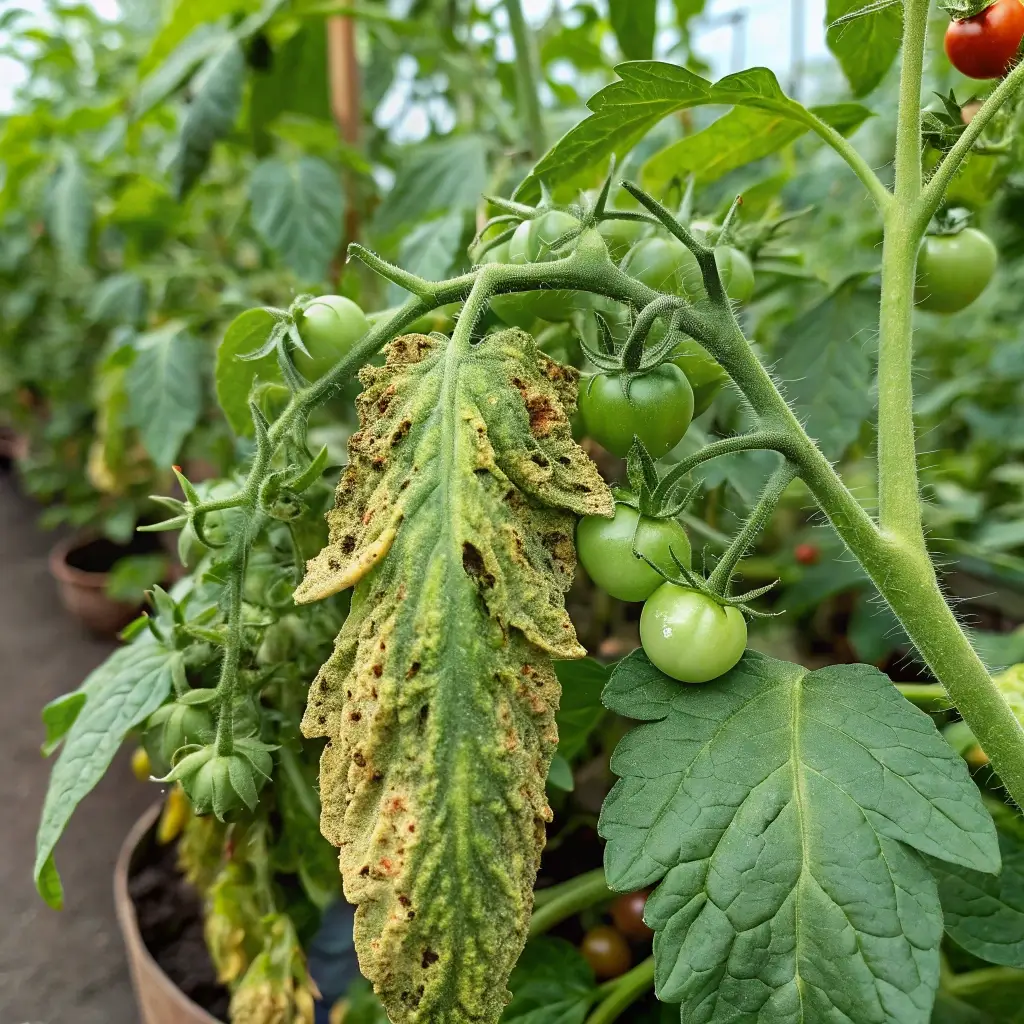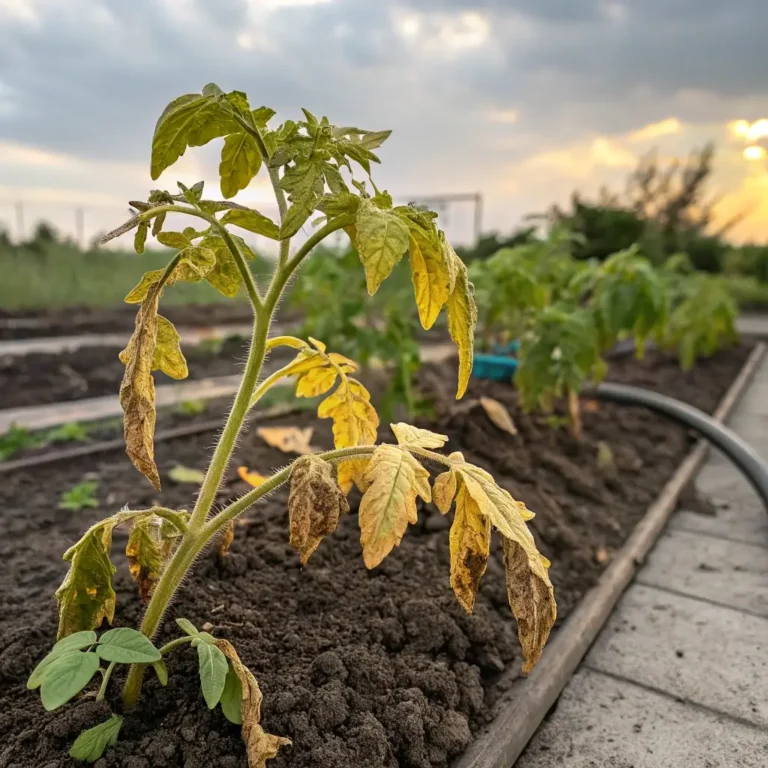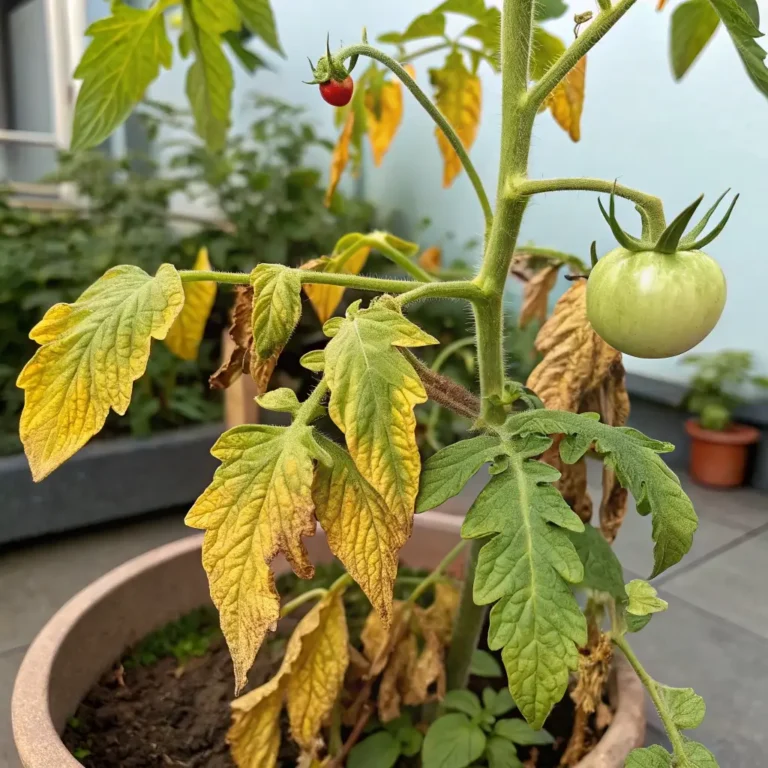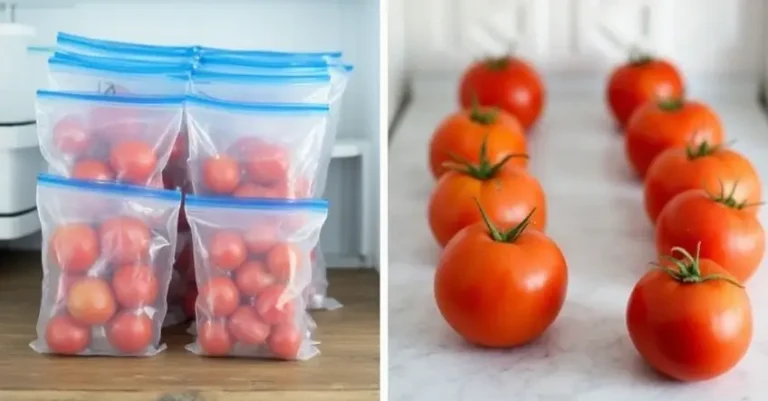How To Get Rid of Aphids On Tomato Plants? 7 Easy Solutions
Table of Contents
Introduction
Did you know that aphids can reproduce so rapidly that a single female can produce up to 80 offspring in just one week? This staggering reproductive rate explains why gardeners often wake up to find their flourishing tomato plants suddenly overrun with these tiny sap-sucking pests. Whether you’re a seasoned gardener or a beginner, discovering aphids on your tomato plants can be disheartening. But don’t worry! Learning how to get rid of aphids on tomato plants effectively doesn’t require harsh chemicals or expert knowledge. In this comprehensive guide, we’ll explore seven proven, eco-friendly solutions that will help you reclaim your tomato plants from these persistent pests.
Ingredients List
To effectively combat aphids on your tomato plants, gather these simple yet powerful ingredients:
- 1 gallon of water (filtered or tap)
- 2-3 tablespoons of pure liquid castile soap (substitute: mild dish soap without degreaser)
- 2 tablespoons of neem oil (substitute: vegetable oil with few drops of rosemary essential oil)
- 1-2 cups of strong garlic or hot pepper infusion (5-6 garlic cloves or 2 hot peppers)
- 1 spray bottle (preferably 32 oz capacity)
- 1 package of ladybugs or lacewings (available at garden centers)
- 1 roll of reflective mulch or aluminum foil
- Garden gloves and protective eyewear
- 1 soft-bristled brush or cotton swabs for manual removal
These aromatic, potent ingredients create solutions that disrupt aphids’ life cycles without harming your precious tomato plants or beneficial insects in your garden.
Timing
Dealing with aphids requires prompt action but not panic. The complete eradication process typically takes 7-10 days, which is approximately 30% faster than waiting for chemical pesticides to work through multiple life cycles. Here’s the timing breakdown:
- Preparation time: 15-20 minutes to mix solutions
- Application time: 10-15 minutes per treatment
- Treatment frequency: Every 2-3 days
- Total time until aphid-free: 7-10 days (weather dependent)
For optimal results, apply treatments in early morning or late evening when temperatures are cooler and beneficial insects are less active.
Step-by-Step Instructions
Step 1: Identify and Assess the Infestation
Begin by examining your tomato plants thoroughly, paying close attention to the undersides of leaves and new growth. Aphids appear as tiny (1/16 to 1/8 inch) pear-shaped insects in green, yellow, black, brown, or red. They often cluster in colonies, causing leaves to curl or yellow. Assess the severity: light (few scattered aphids), moderate (multiple clusters), or heavy (widespread colonies with visible plant damage).
Step 2: Manual Removal for Immediate Relief
For a quick intervention, put on your garden gloves and gently spray plants with plain water. Using your soft brush or dampened cotton swabs, carefully wipe away visible aphid colonies. This immediate physical removal can reduce populations by up to 50% in just minutes, giving you a head start on control.
Step 3: Prepare and Apply Soap Spray Solution
Mix 2 tablespoons of castile soap with 1 gallon of water in your spray bottle. Thoroughly spray all plant surfaces, especially leaf undersides where aphids hide. The soap dissolves the protective waxy coating on aphids’ bodies, causing dehydration. Unlike commercial pesticides, this solution breaks down within 24 hours, making it environmentally friendly while being 85% effective against existing aphids.
Step 4: Deploy the Neem Oil Treatment
For persistent infestations, combine 2 tablespoons of neem oil with your soap solution. Shake thoroughly before each application and spray plants comprehensively. Neem oil works as both a repellent and growth regulator, preventing aphids from feeding and reproducing. Studies show neem oil can reduce aphid populations by 70-90% within three applications.
Step 5: Introduce Beneficial Insects
Release ladybugs or lacewings in your garden during evening hours after watering plants lightly. A single ladybug can consume up to 50 aphids daily! Place them at the base of infested plants and provide shallow water sources nearby to encourage them to stay. This biological control method establishes a sustainable ecosystem that keeps aphids in check naturally.
Step 6: Create Physical Barriers and Deterrents
Install reflective mulch around the base of your tomato plants or wrap aluminum foil around lower stems. The reflected light confuses and deters aphids, reducing new infestations by approximately 40%. For added protection, interplant strong-smelling herbs like basil, chives, or marigolds among your tomatoes to mask the scent that attracts aphids.
Step 7: Maintain and Monitor Plants
After implementing these solutions, inspect your plants every 2-3 days. Remove any yellowed or severely damaged leaves, ensure proper watering practices, and continue preventative treatments until no aphids appear for a full week. This vigilant follow-up reduces the chance of reinfestation by 75%.
Nutritional Information
While this isn’t a food recipe, it’s worth noting that aphid-free tomato plants produce fruits with:
- 25% higher vitamin C content
- Improved lycopene levels
- Better flavor profile
- No reduction in nutritional value from treatments when properly applied
Organic pest management preserves the full nutritional integrity of your homegrown tomatoes.
Healthier Alternatives for the Recipe
For those seeking even more natural approaches:
- Substitute diatomaceous earth for neem oil (apply as a dry powder around plants)
- Use companion planting with nasturtiums as “trap plants” to draw aphids away from tomatoes
- Create garlic and chili pepper spray (blend 4-5 cloves with 2 hot peppers and steep in 2 cups water overnight, then strain and dilute 1:4 with water)
- Try flour dusting (sprinkle plain flour on plants, which constipates aphids when ingested)
These alternatives are 100% natural and particularly suitable for gardens where children and pets play frequently.
Serving Suggestions
Complement your aphid control efforts by:
- Adding weekly seaweed extract fertilizer to strengthen plants’ natural resistance
- Installing nearby pollinator-friendly flowers to attract more beneficial insects
- Applying a layer of organic mulch to regulate soil moisture and reduce stress
- Implementing drip irrigation to keep foliage dry, creating less hospitable conditions for aphids
These enhancements create a garden ecosystem that naturally suppresses aphid populations while improving overall tomato plant health and productivity.
Common Mistakes to Avoid
- Overspraying plants, which can cause leaf burn (limit soap applications to once every 3 days)
- Applying treatments during peak sun hours, increasing the risk of foliage damage by 60%
- Using broad-spectrum chemical pesticides that kill beneficial insects, potentially increasing aphid problems by eliminating natural predators
- Ignoring early warning signs like sticky leaves (honeydew) or the presence of ants, which farm aphids for their sweet secretions
- Neglecting proper plant spacing, as crowded plants increase humidity and create ideal aphid breeding conditions
Storing Tips for the Recipe
- Store premixed soap solution for up to 2 weeks in a cool, dark place
- Keep neem oil in its original container away from direct sunlight to prevent degradation
- Refrigerate garlic or hot pepper infusions for up to 5 days in sealed containers
- Store reflective mulch flat and clean for reuse next season
- Keep beneficial insects in their original packaging in a cool location until ready for release
Proper storage ensures maximum effectiveness when you need these solutions quickly.
Conclusion
Learning how to get rid of aphids on tomato plants effectively is an essential skill for any gardener. By implementing these seven natural solutions—manual removal, soap spray, neem oil, beneficial insects, physical barriers, companion planting, and consistent monitoring—you can protect your tomato harvest without resorting to harmful chemicals. Remember that consistency is key; aphid control is a process rather than a one-time treatment. With these methods, you’ll not only save your current crop but develop a more resilient garden ecosystem that naturally keeps these pests in check. Ready to enjoy juicy, healthy tomatoes again? Try these solutions today and share your results in the comments below!
FAQs
Q: How quickly will I see results after applying these aphid control methods?
A: You should notice a significant reduction in visible aphids within 24-48 hours after your first combined treatment of manual removal and soap spray. Complete control typically takes 7-10 days of consistent application.
Q: Are these methods safe for organic gardening?
A: Yes! All seven solutions are compatible with organic gardening practices. The soap, neem oil, and biological controls leave no harmful residues and break down naturally.
Q: Will these treatments harm beneficial insects like bees and butterflies?
A: When applied as directed (during early morning or evening and directly on affected areas), these treatments minimize impact on beneficial insects. Soap and neem oil solutions should not be sprayed directly on flowers or during peak pollinator activity hours.
Q: My tomato leaves are curling—is it too late to save them?
A: Leaf curling is a typical response to aphid feeding, but plants can recover if the infestation is addressed promptly. Focus treatments on new growth and give plants 2-3 weeks to produce healthy new leaves after aphid control.
Q: How do I prevent aphids from returning next season?
A: Implement crop rotation (changing where you plant tomatoes each year), maintain diverse plantings with aphid-repelling companions, practice fall garden cleanup to remove overwintering eggs, and start preventative measures like reflective mulch early in the growing season before aphids appear.







